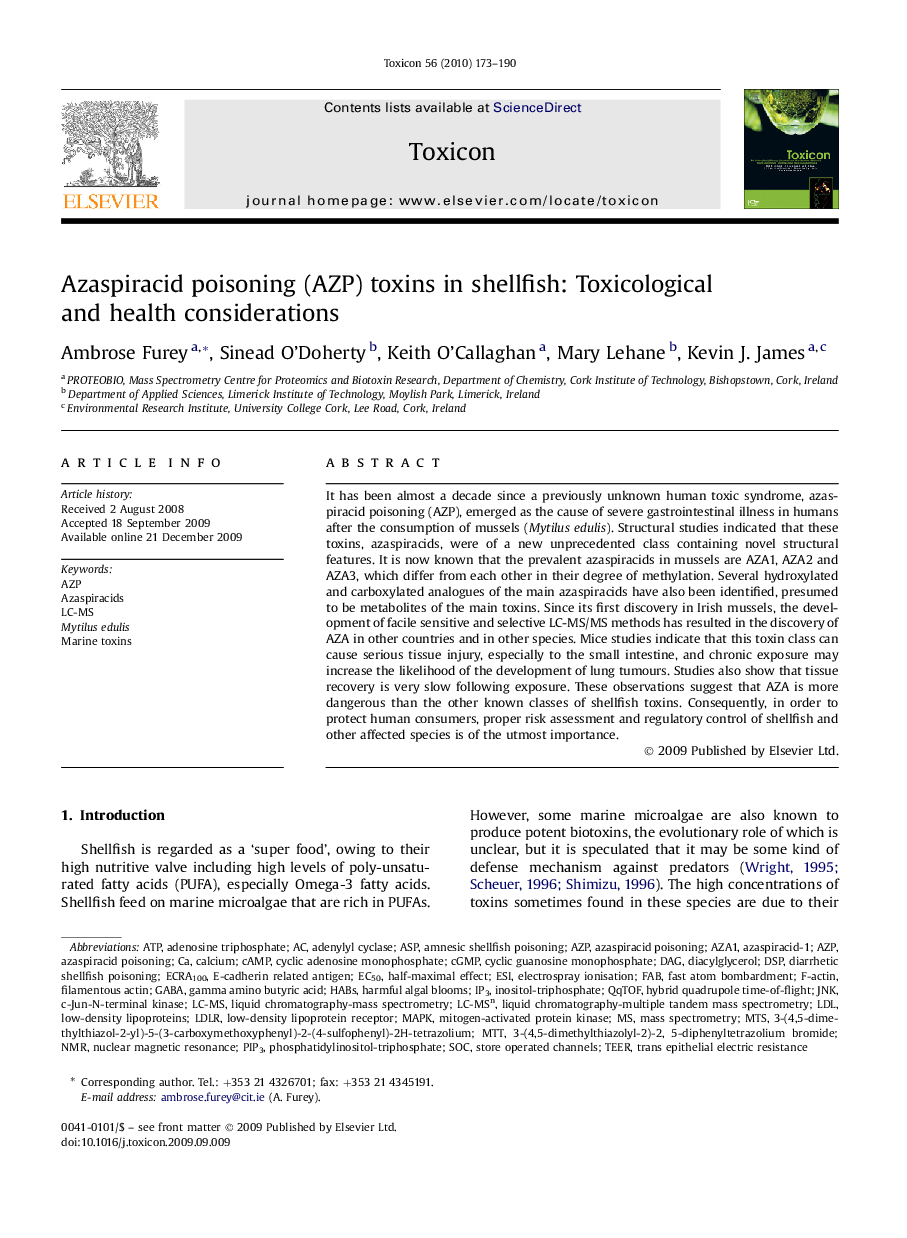| کد مقاله | کد نشریه | سال انتشار | مقاله انگلیسی | نسخه تمام متن |
|---|---|---|---|---|
| 2065172 | 1076909 | 2010 | 18 صفحه PDF | دانلود رایگان |

It has been almost a decade since a previously unknown human toxic syndrome, azaspiracid poisoning (AZP), emerged as the cause of severe gastrointestinal illness in humans after the consumption of mussels (Mytilus edulis). Structural studies indicated that these toxins, azaspiracids, were of a new unprecedented class containing novel structural features. It is now known that the prevalent azaspiracids in mussels are AZA1, AZA2 and AZA3, which differ from each other in their degree of methylation. Several hydroxylated and carboxylated analogues of the main azaspiracids have also been identified, presumed to be metabolites of the main toxins. Since its first discovery in Irish mussels, the development of facile sensitive and selective LC-MS/MS methods has resulted in the discovery of AZA in other countries and in other species. Mice studies indicate that this toxin class can cause serious tissue injury, especially to the small intestine, and chronic exposure may increase the likelihood of the development of lung tumours. Studies also show that tissue recovery is very slow following exposure. These observations suggest that AZA is more dangerous than the other known classes of shellfish toxins. Consequently, in order to protect human consumers, proper risk assessment and regulatory control of shellfish and other affected species is of the utmost importance.
Journal: Toxicon - Volume 56, Issue 2, 15 August 2010, Pages 173–190